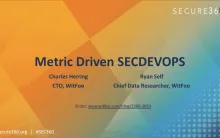As I have had opportunity to demonstrate our product to cybersecurity veterans I am often asked “How did your very small team do this when larger, well-funded teams cannot?” It is true, the WitFoo development team has never been larger than 5 active members at any time and we have only had 10 contributors to the code-base. We don’t Frankenstein together open source code, we custom build it all. All told, our code consists of more than 4 million lines of proprietary code written by a handful of hard-hitting warrior developers. As we wrap our newest and grandest release, I’d like to share some insight into how we pulled it off.









